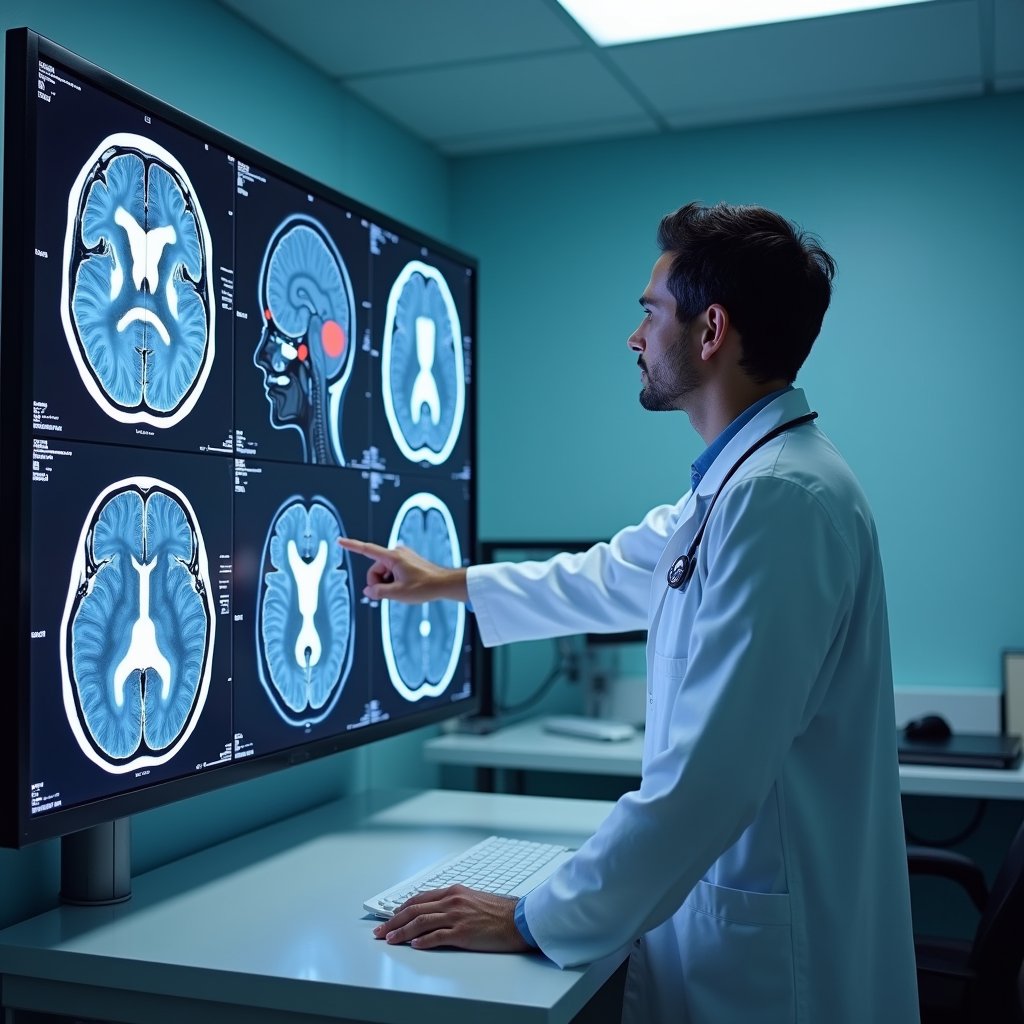Doctors use three primary tests to distinguish between Parkinson’s disease and essential tremor. Your physician will conduct a physical assessment to evaluate tremor patterns, rigidity, and postural stability. They’ll order diagnostic imaging like DaTscans or MRI to visualize brain changes and dopamine system abnormalities. Ultimately, they’ll perform movement analysis tests, observing how your tremors respond to specific actions and rest. Understanding these distinct diagnostic approaches helps guarantee accurate treatment decisions.
Clinical Observation and Physical Assessment

While both Parkinson’s disease and essential tremor present with involuntary movements, clinical observation and physical assessment remain pivotal tools for accurate differentiation.
During the physical examination, doctors evaluate key motor symptoms characteristic of Parkinson’s disease, including rigidity, bradykinesia, and postural instability. They’ll observe your tremor’s specific features, analyzing its frequency, amplitude, and whether it occurs at rest or during movement. The pattern of disease progression offers vital diagnostic insights: essential tremor typically affects both sides symmetrically, while Parkinson’s tremor usually starts on one side before spreading.
To assess the impact of your movement disorder, you’ll be asked to perform specific tasks like writing or pouring water. These functional tests, combined with a detailed medical history and clinical observation of symptom progression, help establish a differential diagnosis between Parkinson’s disease and essential tremor.
Diagnostic Imaging and Brain Scans

Beyond physical assessments, modern neuroimaging techniques provide objective evidence to distinguish between Parkinson’s disease and essential tremor. These advanced diagnostic tools help visualize specific brain changes and dopamine system abnormalities.
Advanced brain imaging now lets doctors see clear differences between Parkinson’s disease and essential tremor, improving diagnostic accuracy.
Key imaging tests include:
- DaTscan dopamine transporter imaging detects reduced dopamine levels characteristic of Parkinson’s disease
- Magnetic resonance imaging (MRI) reveals structural changes in the brain that differentiate between conditions
- Positron emission tomography (PET) measures brain metabolism patterns unique to each disorder
- Single-photon emission computed tomography (SPECT) evaluates dopamine system function for accurate diagnosis
When combined with clinical observations, these neuroimaging techniques offer precise diagnostic information. You’ll benefit from your doctor’s ability to analyze these detailed brain scans, leading to more accurate treatment decisions.
Movement Analysis and Response Testing

Through careful observation of movement patterns, neurologists can distinguish the characteristic differences between Parkinson’s disease and essential tremor. Your doctor will assess when your tremor occurs whether it’s during rest, action, or specific postures as this timing provides vital diagnostic clues. They’ll evaluate the tremor’s frequency, amplitude, and distribution across your body.
You’ll be asked to perform specific movements while your doctor observes how your tremor responds. Essential tremor typically worsens with action, while Parkinson’s tremor is more prominent at rest. A unique diagnostic tool involves monitoring your response to a small amount of alcohol if you have essential tremor, you may notice improvement, whereas Parkinson’s tremors don’t typically change. These systematic observations and response tests help your doctor make an accurate diagnosis.
Frequently Asked Questions
How Can You Tell the Difference Between Essential Tremors and Parkinson’s?
You’ll notice key differences in tremor onset characteristics essential tremors affect both sides with higher frequency, while Parkinson’s starts on one side with slower movements. Your family history’s more significant with essential tremors. You can identify essential tremors through postural and action tremor patterns, plus they’ll improve with alcohol. Parkinson’s shows rest tremors and won’t respond to alcohol. A neurological exam and medication history review will confirm the diagnosis.
How Do Doctors Test for Essential Tremor?
To diagnose essential tremor, your doctor will conduct a thorough tremor evaluation that includes several key components. They’ll review your medical history and perform physical examination methods focused on hand coordination assessment and tremor patterns. You’ll undergo postural tremor analysis, kinetic tremor assessment, and cerebellar function tests. Your doctor may also analyze your response to beta blockers and conduct neurological reflex testing. No single test definitively confirms essential tremor.
Which Imaging Test Is Recommended to Differentiate Essential Tremor From PD?
DaTscan, a functional neuroimaging test, is the recommended imaging method to differentiate essential tremor from Parkinson’s disease. When clinical manifestations and tremor characteristics (like postural, kinetic, or resting tremors) aren’t conclusive, DaTscan can detect neurodegenerative changes by measuring dopamine transporter levels in your brain. This test complements other diagnostic factors, such as drug response patterns, family history, and stage of life, helping your doctor make a more accurate diagnosis.
What Are the Three Hallmark Signs of Parkinson’s Disease?
The three hallmark signs of Parkinson’s disease you’ll need to recognize are resting tremor, bradykinesia, and rigidity. While patients often develop other motor symptoms like postural instability and freezing episodes later, these three cardinal features form the core diagnostic criteria. Resting tremor typically starts on one side, bradykinesia manifests as slowness in initiating and executing movements, and rigidity presents as muscle stiffness that limits range of motion.






